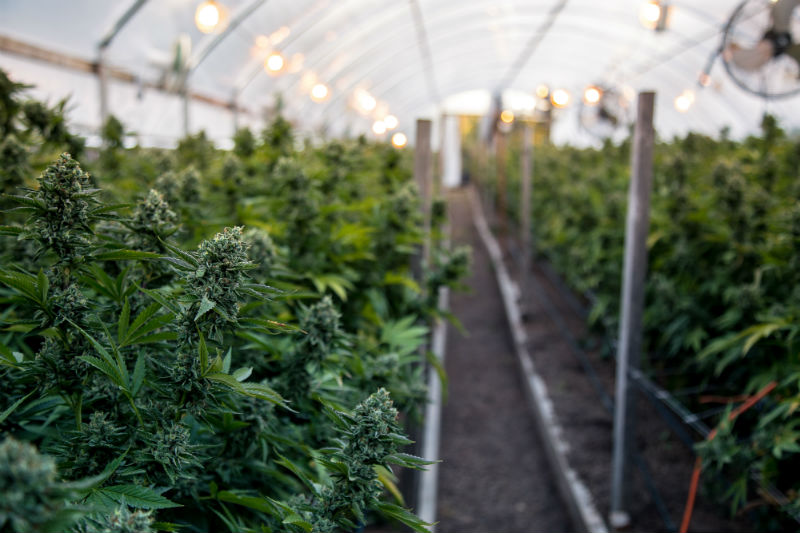
CBD is somewhat magical in more ways than just its natural, wide-ranging therapeutic effects. If you think about it – it’s pretty extraordinary that a seemingly unsuspecting plant gets transformed into beneficial oils, and other types of goods. So, what happens on this magical journey of a cannabis hemp plant, getting extracted and processed into the goods we know and love?
Knowing how your products are made from start to finish, can help you better understand price points, and appreciate the true labor and love behind each bottle you enjoy. So, let’s find out more about the manufacturing process it takes to produce the varied consistencies and textures of the most popular CBD products.
CBD from seed to harvest
All natural, organic and non-synthetic forms of cannabidiol or CBD, start with a cannabis seed – whether hemp or marijuana. The cannabinoid is produced by either type of cannabis species, although it’s more abundant in hemp plants as THC is more abundant in marijuana plants. To grow hemp plants, starting at seed or young veg plants – is quite the time-consuming process.
Most CBD rich hemp strains take anywhere from 8 to 16 weeks to grow to full maturity. This time is dependent on the specific species or genotype, and the environment for growth. While much of the hemp that’s processed for CBD is grown outdoors, for optimal sun energy – indoor cultivation is becoming more popular in colder-region climates, for longer periods of harvests and bulk mass to extract. Overtime, the hemp plants produce trichomes or tiny resinous bubbles that contain cannabinoids like CBD, and terpenes that provide hemp’s unique aromas.
Once the plant is ready to be harvested, it’s all about preserving those trichomes to extract the most CBD, and natural compounds as possible. Farmer to farmer, extractor to extractor, the process of harvesting, drying, and curing hemp plants vary. For the most part, whole plants or stalks are hung to dry, and cured before processed, although other extraction processes can begin with fresh-frozen flower, too.
How CBD oil is extracted
After the plant is grown, and harvested – it’s time to extract those compounds carrying trichomes into oil form. Extraction processes are designed to remove the sticky-icky trichomes that contain CBD, from the other plant material. Over the years, technology and manufacturing has improved for this process so there’s a wide range of ways to do so successfully. The most common extraction methods include –
- Co2 extraction – Using Co2 to extract CBD from bulk hemp flower is the most prestigious method. Extractors use Co2’s ability to function in solid, gas and liquid state, as a solvent to isolate CBD. This process is typically performed in what’s known as a closed loop extractor. In the extractor, Co2 gets compressed until it reaches liquid form. The liquid is then washed over the hemp flower where it strips away CBD, and other cannabinoids. That solution continues through the extractor, where temperatures and pressure levels reverse Co2 back into gas form. 2. Co2 then evaporates, and leaves behind the liquid oil chock-full of cannabinoids. Extracting CBD oil with Co2 also preserves natural terpenes, or the compounds that give cannabis and hemp plants their unique scents and flavors.
- Solvent extraction – Like the Co2 closed-loop extraction method, other liquid solvents can be used to isolate CBD from bulk hemp flower. The most common being butane, ethanol, and propane. These solvents are also washed over the hemp flower to separate CBD and other cannabinoids. The mixture is then heated or cooled, to properly separate and remove the type of solvent that was used from the CBD oil material. Speaking on scent, and taste – one drawback for solvent extractions, is these types of liquids can also capture plant impurities. Which can produce unpleasant flavors, and aromas.
Both methods are highly flammable, and have the potential to be dangerous – hence, why they’re done at a professional and industrial level. Of course, the oil that comes directly out of these extraction processes aren’t the final end-result you’re used to consuming. Once the ‘crude oil’ is extracted from the plant material, the winterization process begins. This is where unwanted materials like fats, lipids, and waxes are removed. Basically, the act of refining and purifying oils, through a process of filters and distillations for consumer use.
The final refinement process not only determines the quality of the CBD oil, but the type of CBD oil too. Let’s discuss the differences in CBD extracts and goods, next.
A variety of CBD goods
High-tech extraction equipment is especially essential for customizing varied types of CBD goods. As you know, hemp and marijuana plants contain a wide range of cannabinoids and terpenes. Yet, some CBD oils contain only specific cannabinoids like CBD, or CBG, while others contain the ‘full-spectrum’ with THC, too. These complex and unique separations are possible with Co2 extraction.
Extractors have the ability to manipulate individual cannabinoid molecules from the refined oil product, with short path distillation. Meaning, they can isolate just CBD for Isolate CBD products. While also isolating and removing THC for Broad Spectrum CBD products. Once the CBD oil is fine-tuned to the final desired ratios, and consistency, it can be bottled and packaged for sale – or, transformed into other goods.
The most popular CBD oil infusions or transformations include –
- Topicals – CBD oil is blended with common skin-care ointment ingredients, like Aloe for a topical application.
- Edibles – Practically any recipe or ‘edible’ good can be infused with CBD oil. The most popular edible on the CBD market today, are in gummy form.
- Capsules – CBD oil can be contained in capsule, or soft gel form. Consumers get the same CBD oil benefits, in an easier to consume and digest delivery method.
Behind the scenes with CBD
Now that you understand the long and intricate process of growing, and manufacturing CBD – you’ll appreciate the natural goodness of its benefits even more. Even though, the methods of nurturing growth, and extracting cannabinoids individually are quite strenuous – the end-results of CBD’s comforting and soothing qualities is definitely worth it.
If you’re seeking premium CBD oil, and goods that are grown with love and handled with care through the products process – look no further than Nature’s Pure. Shop our collection of high-quality full-spectrum, broad-spectrum and isolate CBD goods, now.
Story by Jonathan Hope










